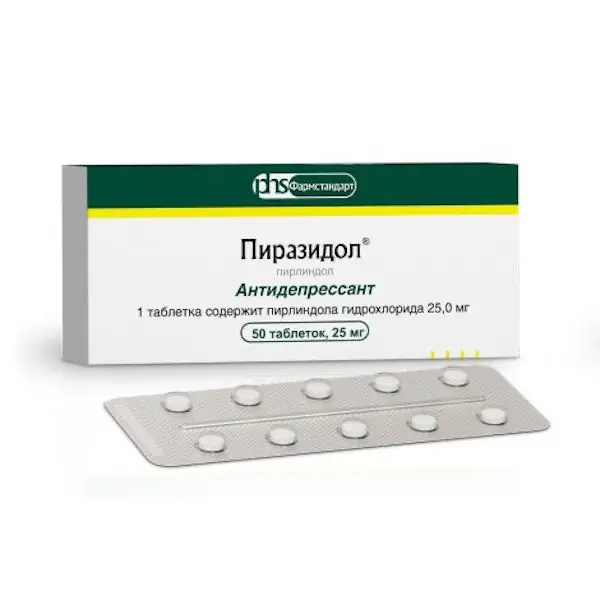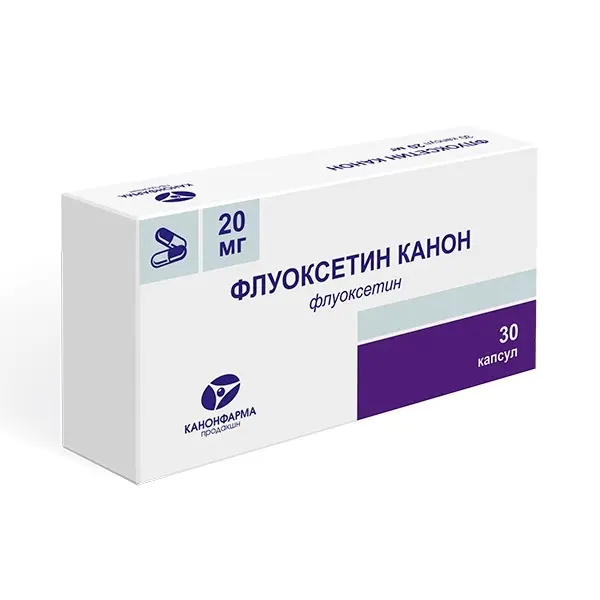Description
Bromocriptine Pharmacodynamics
Bromocriptine is an ergot derivative, a (D2) dopamine receptor agonist. It reduces prolactin secretion in the anterior pituitary lobe and does not affect the production and release of other pituitary hormones, except in patients with acromegaly, in whom bromocriptine reduces growth hormone concentrations.
In the postpartum period prolactin is necessary for initiation and maintenance of lactation. During other periods of life, increased prolactin secretion leads to abnormal lactation (galactorrhea) and/or disorders of ovulation and menstrual cycle.
Bromocriptine, being a specific inhibitor of prolactin secretion, may be used to prevent or suppress physiological lactation as well as to treat pathological conditions caused by prolactin hypersecretion. In amenorrhea and/or anovulatory menstrual cycles (accompanied or not accompanied by galactorrhea), bromocriptine normalizes ovarian function by restoring endocrine regulation at ovarian-pituitary level. Bromocriptine does not disturb postpartum uterine involution and does not increase the risk of thromboembolism. In polycystic ovary syndrome, the drug reduces the severity of clinical manifestations. Bromocriptine stops the growth or reduces the size of prolactin-secreting adenomas (prolactinomas).
In patients with acromegaly, besides reduction of growth hormone and prolactin concentrations in blood plasma, bromocriptine has beneficial effect on clinical manifestations and glucose tolerance.
In Parkinson’s disease, characterized by a lack of dopamine in some structures of the brain, bromocriptine is used in higher doses than for the treatment of endocrine diseases. Bromocriptine stimulates dopamine receptors, contributing to the restoration of neurochemical balance in these structures. Bromocriptine use reduces the severity of tremor, rigidity, akinesia and gait disturbance at all stages of the disease. The therapeutic effect usually lasts for many years (good results were observed with the duration of therapy up to 8 years). Bromocriptine can be prescribed as monotherapy or in combination with other anti-Parkinsonian drugs at the beginning and in later stages of the disease. Combination with levodopa leads to increased antiparkinsonian effect, which allows reducing the dose of levodopa. Bromocriptine reduces the severity of depression in patients with Parkinson’s disease. This is due to its inherent antidepressant properties, confirmed in controlled clinical trials in patients with endogenous or psychogenic depression without Parkinson’s disease.
Prolactin-lowering effect starts 1-2 hours after oral administration, reaching its maximum in 5-10 hours (decrease of prolactin concentration is approximately 80%) and remains approximately at this level for 8-12 hours.
Indications
Acromegaly: as an adjunctive medication, in special cases, as an alternative to surgical treatment or radiation therapy.
Prolactinomas:
– Conservative treatment of prolactin-secreting micro- and macroadenomas
– Preoperative preparation for tumor reduction and relief
– Postoperative treatment if plasma prolactin concentrations remain elevated.
Suppression of lactation for medical reasons:
– Prevention or suppression of lactation in the postpartum period (e.g., intrapartum fetal death, stillbirth, HIV infection in the mother), including the initial stages of postpartum mastitis;
– Prevention of lactation after pregnancy termination.
Menstrual disorders and infertility in women:
S prolactin-dependent diseases and conditions with or without hyperprolactinemia:
– Amenorrhea (accompanied or not accompanied by hyperprolactinemia);
– Luteal phase insufficiency;
– S hyperprolactinemic conditions caused by medications (e.g., certain psychotropic or hypotensive drugs);
S female infertility not caused by hyperprolactinemia:
– Polycystic ovarian syndrome;
– Anovulatory cycles (in addition to the use of anti-estrogenic agents such as clomiphene).
Parkinson’s disease: all stages of idiopathic Parkinson’s disease and
Postencephalic parkinsonism – in monotherapy or in combination with other anti-Parkinsonian drugs.
Hyperprolactinemia in men: prolactin-dependent hypogonadism (oligospermia, loss of libido, impotence).
Contraindications
– Hypersensitivity to bromocriptine or to any excipient of the drug, or to other ergot alkaloids;
uncontrolled arterial hypertension;
arterial hypertension during pregnancy and in the postpartum period; gestosis in the second half of pregnancy (including pre-eclampsia, eclampsia); postpartum period in women with a history of severe cardiovascular disease;
Coronary heart disease and other severe cardiovascular diseases;
A history of cerebrovascular disease;
Obliterative endarteritis; Raynaud’s syndrome; temporal arteritis; gastrointestinal ulcers and gastrointestinal bleeding;
severe hepatic insufficiency; sepsis;
severe mental disorders (including anamnesis); abuse of tobacco;
concomitant use with methyl ergometrine and other ergot alkaloids, moderate or potent cytochrome P450 inhibitors (e.g., itraconazole, voriconazole, clarithromycin); children under age 7 (the effectiveness and safety of bromocriptine in children younger than 7 years has not been confirmed);
rare hereditary forms of lactose intolerance, lactase deficiency, glucose-galactose malabsorption (because the drug contains lactose).
Caution
– Administration in children over 7 years of age and adolescents under 18 years of age;
– Use in patients over 65 years of age;
– patients with cardiovascular diseases (e.g. arterial hypertension, arrhythmias, history of myocardial infarction);
– Parkinson’s disease (in case of long-term treatment with high doses of the drug);
– hepatic impairment;
– severe renal insufficiency;
– postpartum period;
– pregnancy (in patients with pituitary adenoma).
Special caution should be exercised when using Bromocriptine in the postpartum period in patients with arterial hypertension who have recently taken vasoconstrictors (sympathomimetics or ergot alkaloids such as ergometrine or methyl ergometrine).
Use during pregnancy and lactation
Pregnancy
Treatment with bromocriptine should be discontinued in pregnancy unless the potential effect of treatment exceeds the possible risk to the fetus (in large and rapidly growing pituitary tumors). After withdrawal of the drug, the risk of pregnancy interruption does not increase. Clinical experience shows that the use of bromocriptine during pregnancy has no negative effect on its course or outcome.
When bromocriptine is withdrawn in pregnant women with pituitary adenoma, patients should be closely monitored throughout the pregnancy. If there are signs of a marked increase in prolactinoma, such as headache or narrowing of the visual fields, treatment with bromocriptine may be resumed or surgical intervention may be performed.
Breastfeeding period
Bromocriptine reduces milk secretion, so its use during breastfeeding is not recommended.
How to use and dosages.
- By mouth. The drug Bromocriptine should always be taken with meals.
As a rule, treatment begins with a small dose, which is then gradually increased until the optimal effect is achieved. - The maximum daily dose is 30 mg.
- Acromegaly .
- The initial dose is 1/2 tablet of 2.5 mg (1.25 mg) 2-3 times a day, and then, depending on clinical effect and tolerability, the daily dose of the drug is gradually increased to 10-20 mg (4-8 tablets).
- Maximum daily dose for children and adolescents aged 7 to 18 years is 10
mg. - Prolactinomas
- Take 1/2 tablet of 2.5 mg (1.25 mg) 2-3 times daily with gradual increase and selection of the dose necessary to adequately reduce plasma prolactin concentrations.
The maximum recommended dose for children and adolescents aged 7-12 years is 5 mg/day, and for those aged 13-18 years – 10 mg/day. - Suppression of lactation for medical reasons
- On the first day, use 1/2 tablet 2.5 mg (1.25 mg) 2 times (during meals at breakfast and dinner), then for 14 days use 1 tablet (2.5 mg) 2 times a day. Treatment should be started a few hours after delivery or abortion, but not earlier than 4 hours – after stabilization of vital functions. In 2-3 days after cancellation of the drug, sometimes there is a slight secretion of milk. It is eliminated by resuming the drug in the same dose for another week. Beginning postpartum mastitis
- It is used in the same way as for lactation inhibition. If necessary, additional use of antibiotics is possible.
- Menstrual disorders and infertility in women:
- Take 1/2 tablet of 2.5 mg (1.25 mg) 2-3 times a day; if the effect is insufficient, the dose of the drug is gradually increased to 5-7.5 mg (2-3 tablets) a day until normalization of the menstrual cycle and/or restoration of ovulation. To prevent relapse, treatment may be continued for several menstrual cycles.
- Parkinson’s disease.
- Treatment begins with low doses that are slowly increased until maximum therapeutic effect is achieved. Usually the patient takes the initial dose of the drug (1.25 mg, i.e. 1/2 tablet of 2.5 mg) before bedtime, for 1 week. Then the dose of Bromocriptine should be slowly increased until the minimum effective dose for each patient is reached. The daily dose should be increased by 2.5 mg at 1 week intervals. The daily dose is divided into 2-3 doses. An adequate therapeutic result can be achieved within 6-8 weeks of treatment. If this does not happen, the daily dose can be increased further – every week by 2.5 mg/day.
- The maximum daily dose of bromocriptine in monotherapy or in combination therapy should not exceed 30 mg. Prolonged therapy with high doses of bromocriptine over 20 mg/day for 6 months may lead to pleuropulmonary fibrotic changes.
If the development of adverse reactions is noted during dose selection of Bromocriptine, the daily dose should be temporarily reduced and maintained at this low level for at least 1 week. If the adverse reactions decrease, the daily dose of the drug may be increased again. - In patients with motor disturbances against the background of levodopa use, it is recommended to reduce the dose of levodopa before starting therapy with Bromocriptine.
After a satisfactory clinical effect of Bromocriptine treatment has been achieved, further gradual reduction of levodopa dose may be continued. - Complete withdrawal of levodopa may be possible in some patients taking bromocriptine. Hyperprolactinemia in men.
- Take 1/2 tablet (1.25 mg) 2-3 times daily, gradually increasing the dose by 1.25 mg to 5-10 mg (2 – 4 tablets) at 2-3 week intervals.
- Special patient groups
- Administration in children younger than 7 years of age
Safety and efficacy in children younger than 7 years old has not been studied, therefore Bromocriptine is contraindicated for this age group (see section “Contraindications”).
Use in elderly patients - Considering the high incidence of decreased liver, renal or cardiac function; the presence of concomitant diseases and the use of concomitant drug therapy, Bromocriptine should be used with caution in elderly patients. Therapy with the drug should be initiated and carried out in the lowest effective dose.
Use in patients with renal insufficiency - Studies on the efficacy and safety of bromocriptine in patients with renal insufficiency have not been conducted. As bromocriptine and its metabolites are almost completely excreted through the intestine, there is no need to adjust its dose in patients with renal failure.
- Use in patients with hepatic impairment
Studies of the efficacy and safety of bromocriptine in patients with hepatic impairment have not been conducted.





